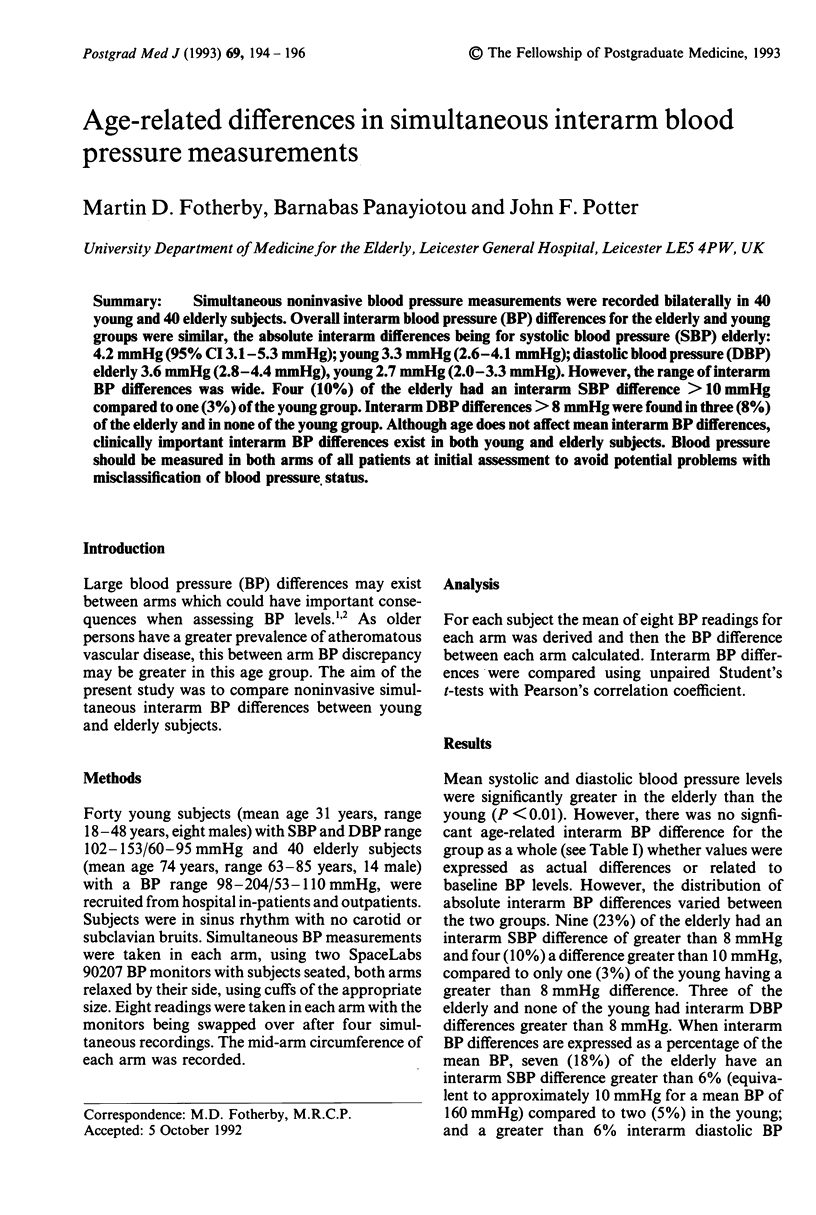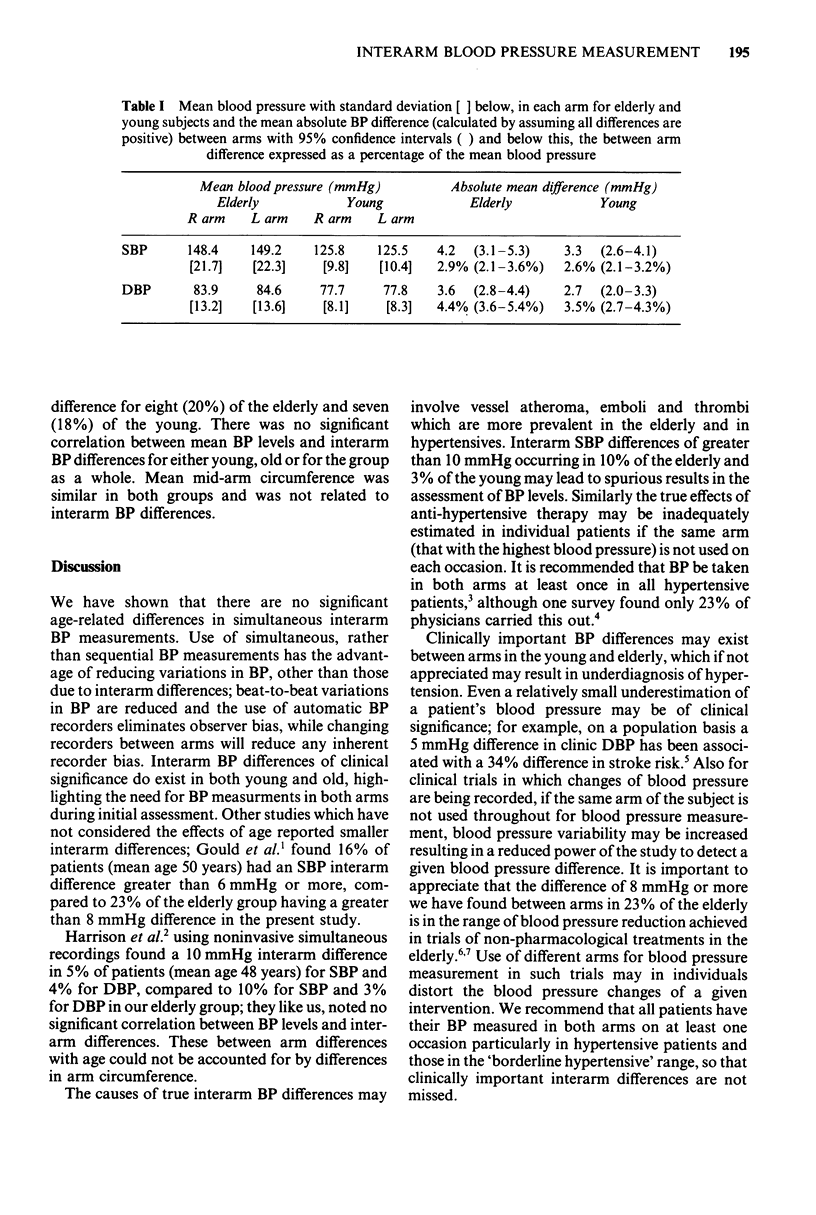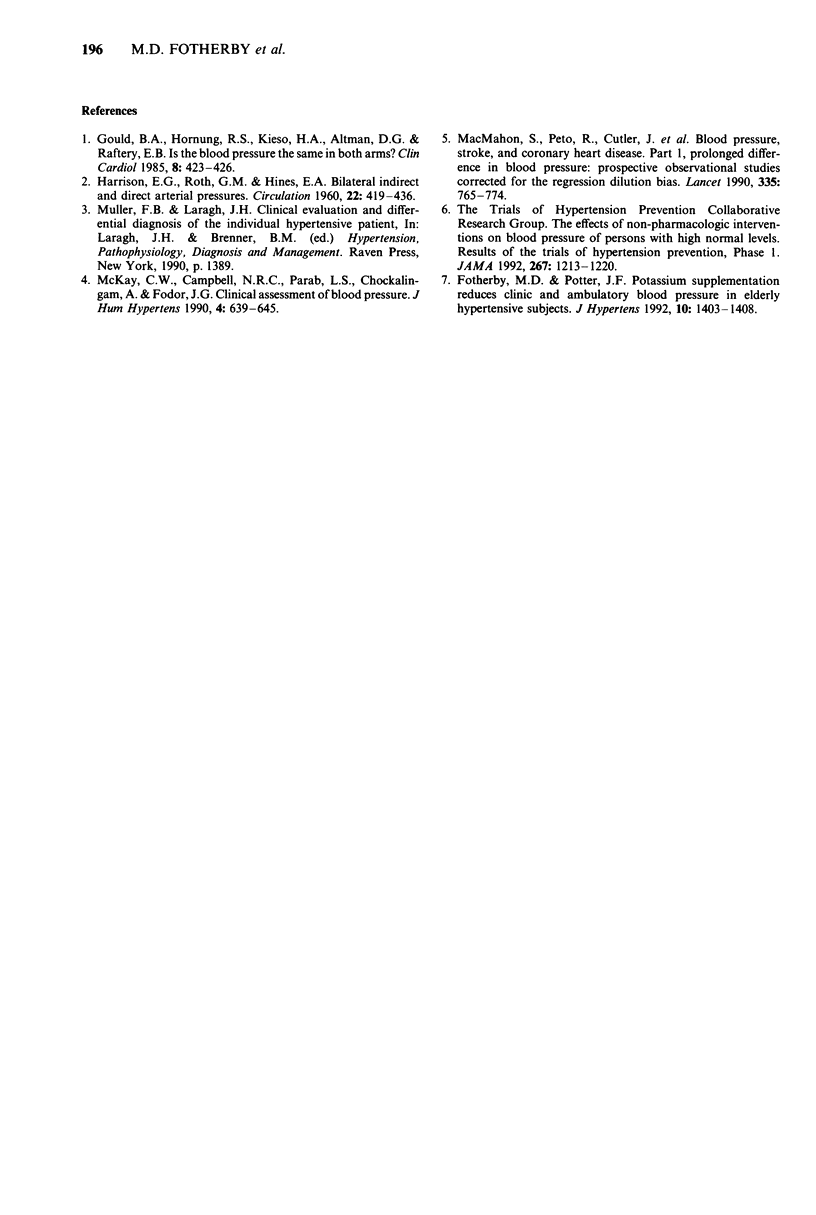Abstract
Simultaneous noninvasive blood pressure measurement were recorded bilaterally in 40 young and 40 elderly subjects. Overall interarm blood pressure (BP) differences for the elderly and young groups were similar, the absolute interarm differences being for systolic blood pressure (SBP) elderly: 4.2 mmHg (95% CI 3.1-5.3 mmHg); young 3.3 mmHg(2.6-4.1 mmHg); diastolic blood pressure (DBP) elderly 3.6 mmHg(2.8-4.4 mmHg), young 2.7 mmHg(2.0-3.3 mmHg). However, the range of interarm BP differences was wide. Four (10%) of the elderly had an interarm SBP difference > 10 mmHg compared to one (3%) of the young group. Interarm DBP differences > 8 mmHg were found in three (8%) of the elderly and in none of the young group. Although age does not affect mean interarm BP differences, clinically important interarm BP differences exist in both young and elderly subjects. Blood pressure should be measured in both arms of all patients at initial assessment to avoid potential problems with misclassification of blood pressure status.
Full text
PDF


Selected References
These references are in PubMed. This may not be the complete list of references from this article.
- Fotherby M. D., Potter J. F. Potassium supplementation reduces clinic and ambulatory blood pressure in elderly hypertensive patients. J Hypertens. 1992 Nov;10(11):1403–1408. doi: 10.1097/00004872-199211000-00013. [DOI] [PubMed] [Google Scholar]
- Gould B. A., Hornung R. S., Kieso H. A., Altman D. G., Raftery E. B. Is the blood pressure the same in both arms? Clin Cardiol. 1985 Aug;8(8):423–426. doi: 10.1002/clc.4960080803. [DOI] [PubMed] [Google Scholar]
- HARRISON E. G., Jr, ROTH G. M., HINES E. A., Jr Bilateral indirect and direct arterial pressures. Circulation. 1960 Sep;22:419–436. doi: 10.1161/01.cir.22.3.419. [DOI] [PubMed] [Google Scholar]
- MacMahon S., Peto R., Cutler J., Collins R., Sorlie P., Neaton J., Abbott R., Godwin J., Dyer A., Stamler J. Blood pressure, stroke, and coronary heart disease. Part 1, Prolonged differences in blood pressure: prospective observational studies corrected for the regression dilution bias. Lancet. 1990 Mar 31;335(8692):765–774. doi: 10.1016/0140-6736(90)90878-9. [DOI] [PubMed] [Google Scholar]
- McKay D. W., Campbell N. R., Parab L. S., Chockalingam A., Fodor J. G. Clinical assessment of blood pressure. J Hum Hypertens. 1990 Dec;4(6):639–645. [PubMed] [Google Scholar]


